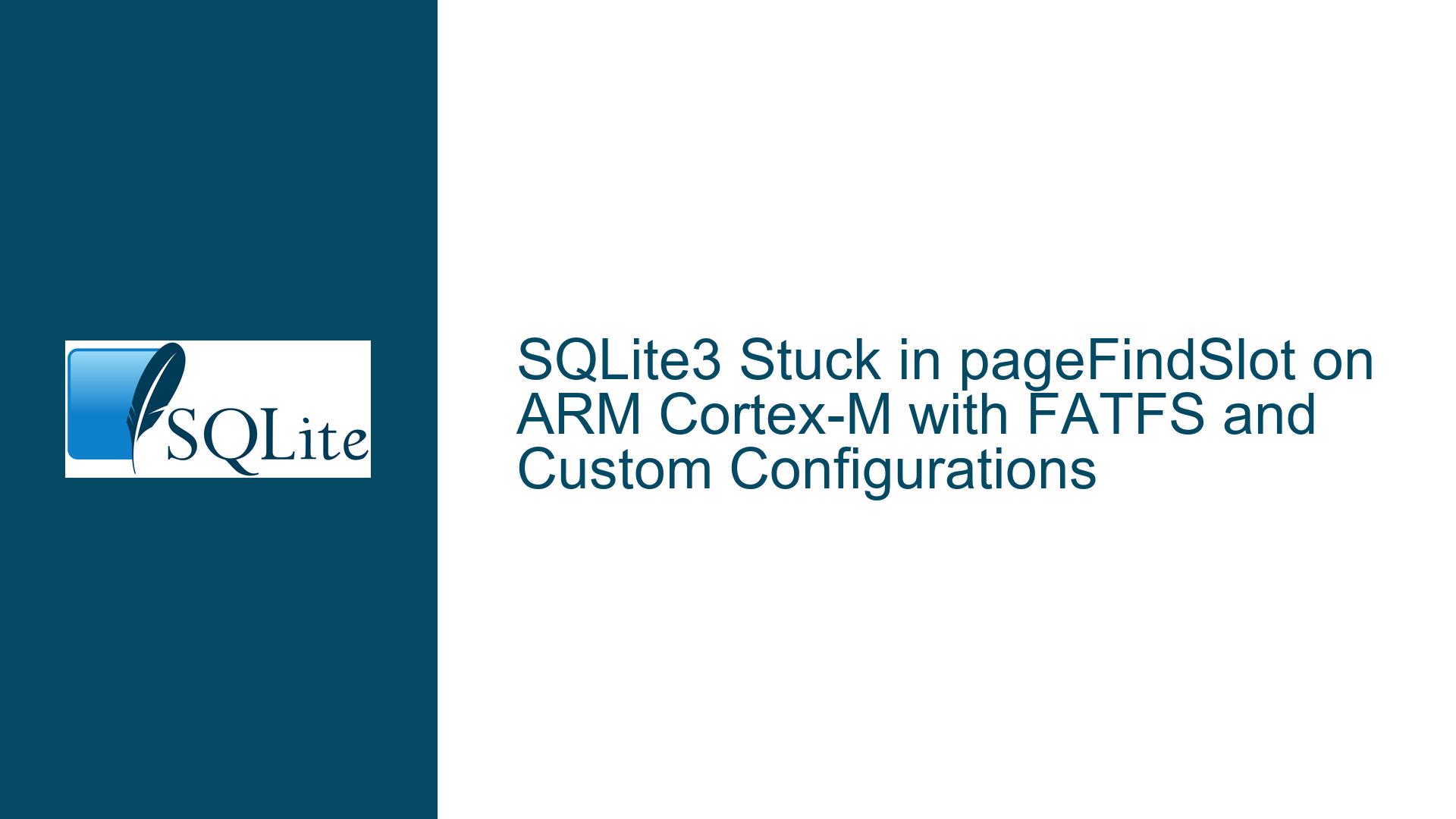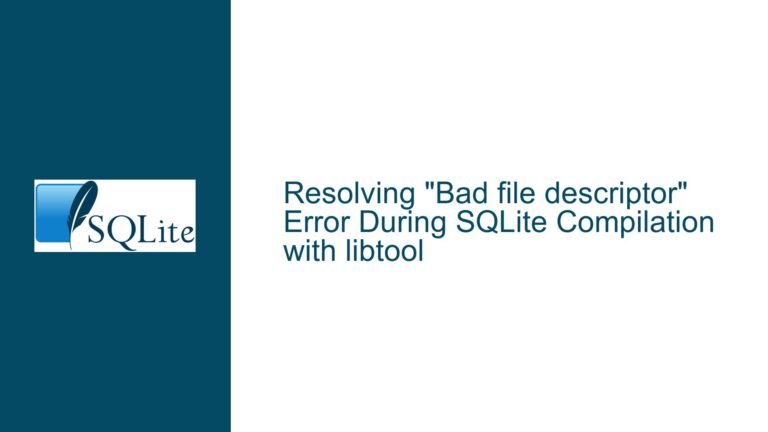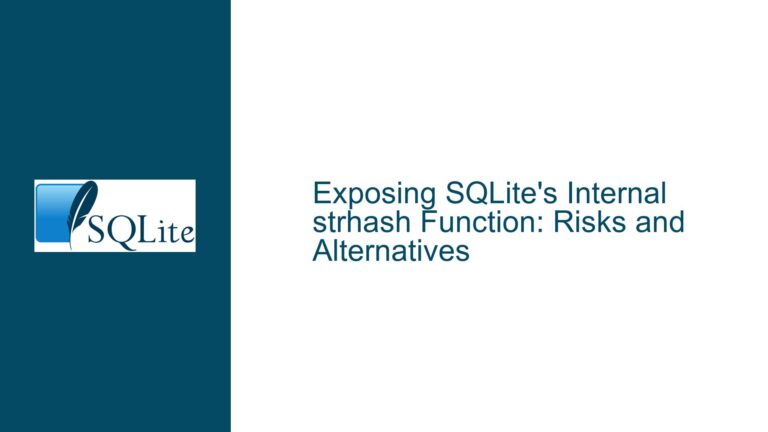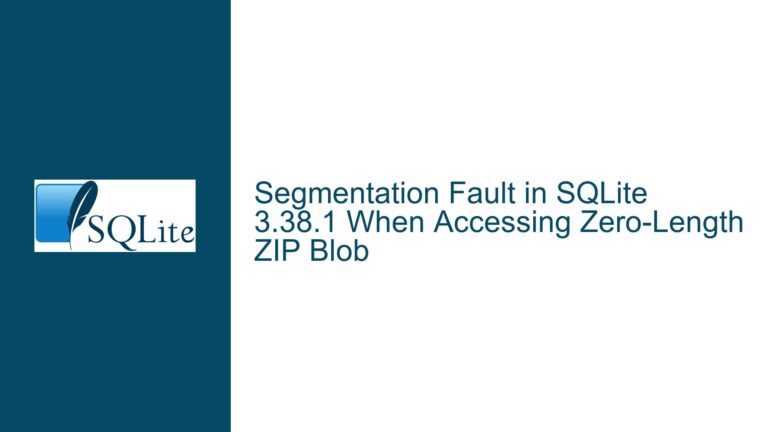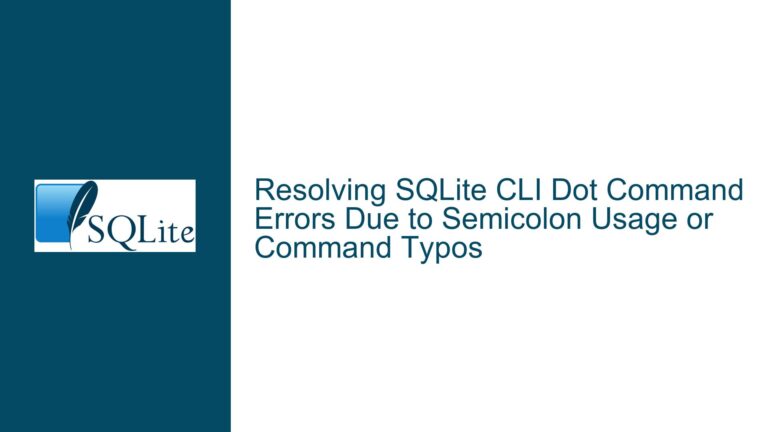SQLite3 Stuck in pageFindSlot on ARM Cortex-M with FATFS and Custom Configurations
SQLite3 Heap Allocation and Memory Corruption in Embedded Systems
When working with SQLite3 on embedded systems, particularly on ARM Cortex-M platforms, memory allocation and corruption issues can arise due to the constrained environment and custom configurations. In this scenario, the SQLite3 amalgamation is stuck in the pageFindSlot function during a memcpy operation, specifically at the point where pc = 3601 and maxPC = 4088. This issue is exacerbated by the use of FATFS for MMC storage, custom heap allocation, and specific SQLite3 configurations such as PRAGMA journal_mode=OFF. The problem manifests as a HardFault, indicating a severe memory access violation or corruption.
The pageFindSlot function is part of SQLite3’s internal mechanism for managing B-tree pages, which are fundamental to its storage architecture. When SQLite3 attempts to insert a cell into a B-tree page, it calls allocateSpace, which in turn calls pageFindSlot to find a suitable slot for the new cell. The memcpy operation within pageFindSlot is used to shift data within the page to make room for the new cell. However, the HardFault suggests that the memory being accessed is either invalid or corrupted, leading to a crash.
The custom configuration includes setting up a 1MB SQLite heap in SDRAM, using FATFS with Long File Name (LFN) support up to 255 characters, and disabling the journal mode. These configurations, while intended to optimize performance and resource usage, may introduce subtle issues that are not immediately apparent. For instance, disabling the journal mode removes the write-ahead log, which can lead to data corruption in the event of a power failure or system crash. Additionally, the use of FATFS with LFN support may introduce additional complexity in file handling, potentially leading to memory alignment issues or buffer overflows.
Interrupted Write Operations and Memory Alignment Issues
One of the primary causes of this issue could be interrupted write operations due to the lack of journaling. When PRAGMA journal_mode=OFF is set, SQLite3 does not use a write-ahead log (WAL) or rollback journal, which means that any interruption during a write operation can leave the database in an inconsistent state. This inconsistency can manifest as memory corruption, particularly in the B-tree pages, leading to the observed HardFault in pageFindSlot.
Another potential cause is memory alignment issues. ARM Cortex-M processors have strict alignment requirements for memory access, particularly when dealing with multi-byte data types. If the memory allocated for the SQLite heap in SDRAM is not properly aligned, it can lead to misaligned memory accesses during operations like memcpy, resulting in a HardFault. This is especially relevant when dealing with custom memory allocators like SQLITE_ENABLE_MEMSYS5, which may not guarantee proper alignment.
The use of FATFS with LFN support can also contribute to the issue. FATFS is a lightweight file system designed for embedded systems, but it may not handle long file names as efficiently as expected. If the file system layer introduces additional overhead or misalignment in memory buffers, it can lead to corruption when SQLite3 attempts to read or write data. This is particularly problematic when SQLite3 is configured to use a custom heap in SDRAM, as any misalignment or corruption in the file system layer can propagate to the SQLite heap.
Finally, the stack size configuration may also play a role. The minimum stack size is set to 0x2000 (8KB), which may be insufficient for the operations being performed. SQLite3’s internal operations, particularly those involving B-tree manipulation, can be stack-intensive. If the stack overflows, it can lead to memory corruption and subsequent HardFaults. This is especially critical in embedded systems where stack space is limited.
Implementing Proper Memory Alignment and Enabling Journaling
To resolve this issue, several steps can be taken to ensure proper memory alignment, enable journaling, and optimize the stack size. First, it is essential to verify that the memory allocated for the SQLite heap in SDRAM is properly aligned. This can be achieved by using memory allocation functions that guarantee alignment, such as memalign or posix_memalign. Additionally, the SQLITE_ENABLE_MEMSYS5 configuration should be reviewed to ensure that it aligns memory allocations according to the requirements of the ARM Cortex-M processor.
Next, enabling journaling is crucial to prevent data corruption in the event of an interrupted write operation. While PRAGMA journal_mode=OFF may improve performance, it significantly increases the risk of corruption. Instead, consider using PRAGMA journal_mode=WAL or PRAGMA journal_mode=DELETE to enable write-ahead logging or rollback journaling, respectively. This will ensure that the database remains consistent even if a write operation is interrupted.
The stack size should also be increased to prevent stack overflow. A minimum stack size of 0x2000 may be insufficient for the operations being performed. Consider increasing the stack size to at least 0x4000 (16KB) or more, depending on the complexity of the operations and the available memory. This will provide sufficient space for SQLite3’s internal operations and reduce the risk of stack-related memory corruption.
Finally, the use of FATFS with LFN support should be carefully reviewed. Ensure that the file system layer is correctly configured and that it does not introduce additional overhead or misalignment in memory buffers. If necessary, consider using a different file system or reducing the maximum LFN length to minimize the risk of corruption.
By addressing these issues, the SQLite3 amalgamation should no longer get stuck in pageFindSlot, and the HardFault should be resolved. Proper memory alignment, enabling journaling, increasing the stack size, and optimizing the file system configuration will ensure that SQLite3 operates reliably on the ARM Cortex-M platform with FATFS and custom configurations.
